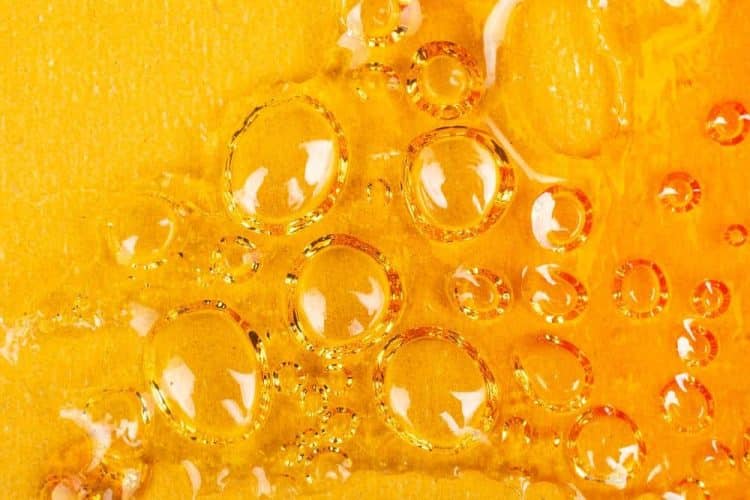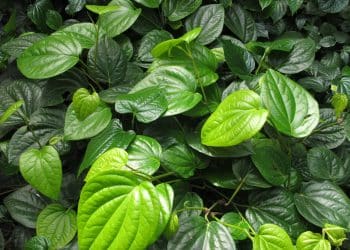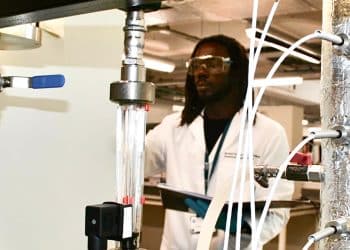Supercritical carbon dioxide (CO2) can be used as solvent for the extraction of active compounds from botanical sources. Plant material is ground to a desired particle size and placed into the extraction chamber of a closed loop system. The solvent is held to or above its critical pressure and temperature, 72.8 atm and 31 °C respectively, reaching its supercritical state and behaving in the middle of a gas and a liquid. Passing through the extraction chamber, the supercritical CO2 will extract plant constituents. The relatively low operating pressure and temperature allow the extraction of thermolabile molecules without altering the extract composition and the modulation of the operating parameters permits the selective extraction of different compounds. [1]
An extract obtained with supercritical CO2 can keep a very similar composition to the one present in the original plant substance, keeping also the full spectrum of scents and flavors: the whole plant terpenic fraction extracted with supercritical CO2 remains intact and unlike other extraction methods, it is possible to keep in the final product even low molecular weight terpenes which contribute to the overall benefit of the plant extract.
When using supercritical fluid extraction technique the great advantage is to make solvent-free extracts, obtaining high-quality products with good nutritional and organoleptic properties. [2] This solvent is particularly suitable for lipophilic substances extraction, but its polarity and solvation power can be tuned adding a co-solvent like ethanol or water to the process. [3]
Supercritical CO2 extraction is considered safe and green because the solvent can be almost completely recycled and used again for other extraction runs. Compared to other solvents, CO2 is non flammable , non-toxic, inert and it doesn’t leave residues because it bubbles away completely from the extract when the process is over. An important aspect to consider is that the source material should be a high quality one: at the same way as CO2 extraction concentrates the valuable plant constituents, it should be noticed that can also concentrate pesticides from 7 to 53 times more than other solvents in the final product. [3] Even if the extraction selectivity can be tuned during the process thorugh pressure and temperature variations, it is always recommended to use plant material taken from certified sources and shown to be pesticide-free by analysis.
References:
[1] Mendiola, J.A.; Herrero, M.; Cifuentes, A.; Ibañez, E. (2007). “Use of compressed fluids for sample preparation: Food applications”. Journal of Chromatography A. 1152 (1–2): 234–246. doi:10.1016/j.chroma.2007.02.046 [Journal impact factor = 4.17] [Times cited = 315]
[2] Aladić, Krunoslav; Jarni, Kristjan; Barbir, Tina; Vidović, Senka; Vladić, Jelena; Bilić, Mate; Jokić, Stela (2015). Supercritical CO2 extraction of hemp (Cannabis sativa L.) seed oil. Industrial Crops and Products, 76(), 472–478. doi:10.1016/j.indcrop.2015.07.016 [Journal impact factor = 5.645] [Times cited = 128]
[3] Guba, R. (2002). “The Modern Alchemy of Carbon Dioxide Extraction.” International Journal of Aromatherapy 12 (3), 120–126.












